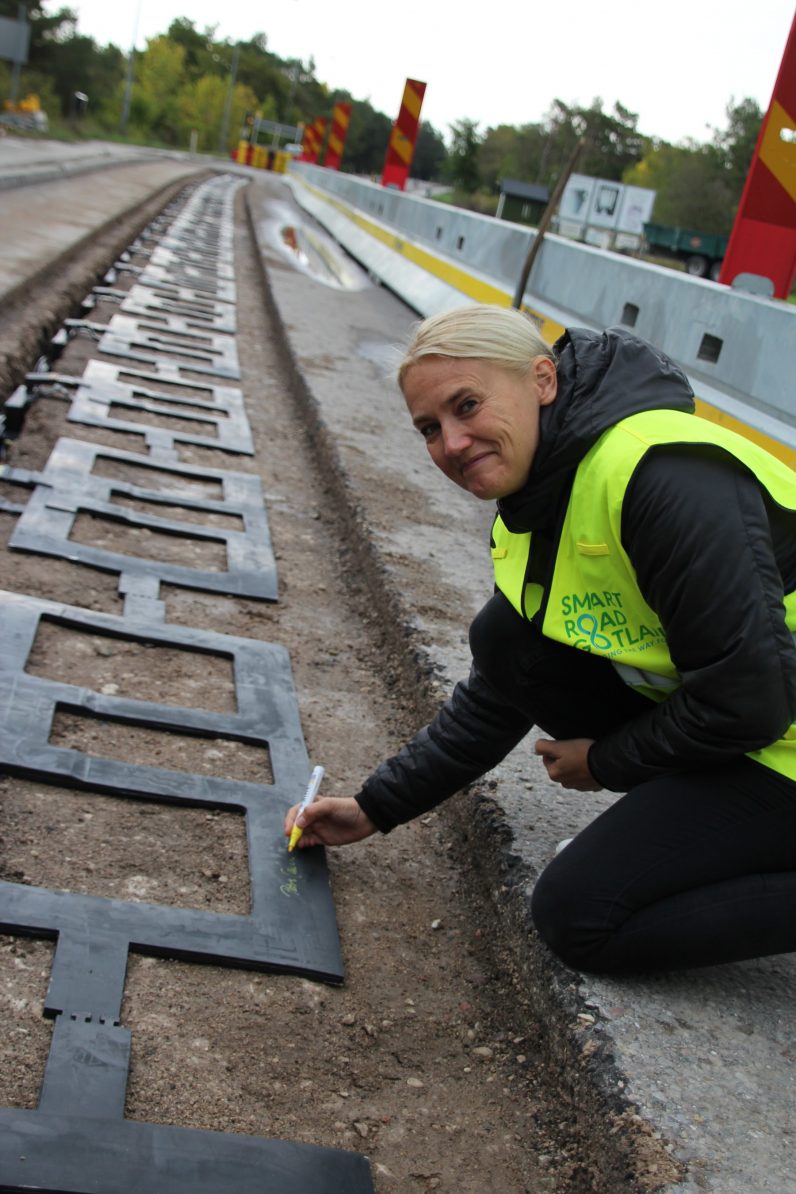How it works:
Its charging solution powers EVs from electrical fields generated by copper coils under the asphalt A management unit transfers the energy from the electricity grid to the road infrastructure and manages communication with approaching vehicles Receivers are installed on the vehicles’ floor to transmit the energy directly to battery while driving
In December, the company launched an E-bus shuttle, charged by Germany’s first wireless electric road system, which powers a bus line between a training center in Karlsruhe and the local public transport system. The wireless charging lessens the electrical grid connections needed at bus facilities. It also reduces vehicle battery reliance, size, and weight. Not to mention that charging while on the go brings down fleet vehicle downtime and enables extended operational hours.
Elonroad (Sweden)
Elonroad creates charging infrastructure for all-electric vehicles. It’s both an electric road solution for charging while driving and an automatic park charger without cables. It works in cities, highways, parking spaces, and taxi lines. The company mounts conductive power strips on top of roads. A conductive pick-up under the vehicle connects to the electric rail, creating bus stop charging and in-motion charging for vehicles with access permission through a wireless system. Then, the road connects to a server that identifies each vehicle. The energy delivered from each segment is measured, and the energy provider bills the right amount to each customer.
Underground Power (Italy)
Underground Power is an Italian company that creates smart speed bumps. Tire-like rubber paving converts the kinetic energy produced by moving vehicles into electric energy. This helps cars respect the speed limits and retrieves the kinetic energy wasted during the deceleration.


